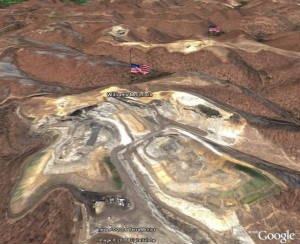|
Coal was first discovered in West Virginia
in 1742. It was first sited along a tributary of the Kanawha River by John Peter Salley. Coal is found in 53 of the 55 counties
and there are 117 named coal seams in West Virginia. Of all these counties, McDowell county has produced the most coal in
West Virginia. Even though there was so much coal in West Virginia, there was very little mining done until the mid-1800's.
The reason being that there was a great abundance of wood and very few manufacturing industries.
Coal slowly worked it's way into the lives
of the people of West Virgina. First in 1810, the people in Wheeling began to use coal, that camae from a nearby mine, to
heat their homes. Then, in 1811, the first steamboat on the Ohio River burned coal from the mines along the Ohio banks. By
1817, coal was already sarted to replcae charcoal as a fuel source for numerous Kanawha River salt furnaces. Finally,
in 1836, West Virginian coal fields were receiving so much attention that Professor William B. Rogers, Virginia's foremost
geologist, was sent to analyze the coal from teh mines in eight counties.
By 1840 the total coal production was about
300,000 tons, of which 200,000 tons were used in the Kanawha salt furnaces and most of the remainder was used by the
factories and the homes of teh people in Wheeling. Between 1840 and 1860 many coal companies were organized, and corporations
were created for encouraging financial investments from foreign countries.
|
 |
|
|
|
 |
|
Coal mining may be a big industry for West Virginia, but is certainly not
the best thing for the environment. One of the biggest complaint people have with mining is usually the environmental
impact that surface mining, or strip mining, has.
Strip mining does exactly what its name says it does; it strips the land.
Trees are unrooted, land is destroyed, and, worst of all, streams are polluted. The streams being polluted increases
the potential for erosion and flooding. Due to environmentalists, companies must now restore the land after they are done
mining. In some cases the land is actually left in better condition, but in others it is forever ruined.
Another big issue is mountain top removal. Some people consider it to be
strip mining on steroids. Mining companies blow off the tops of mountains to get to the coal underneath. This type of mining
does save time and money spent on the underground mining. It even has possibly saved the lives of any miners who might have
been killed when mining. It is absolutly horrible to the environment though. The tops of the mountains fall into near by valleys
and rivers. Not only does it ruin the mountains, but it pollutes the area around the mountain. It causes major floods which
can, and have, resulted in death.

|
| Mountain Top Removal |
|
 |
|
|
|
